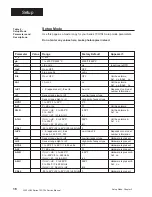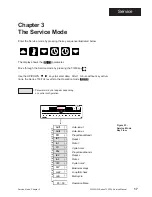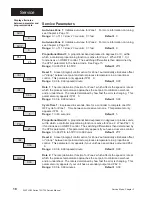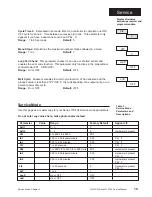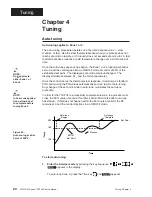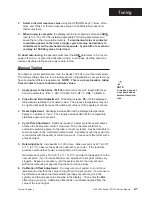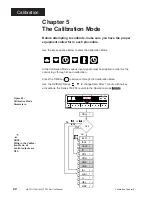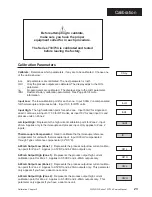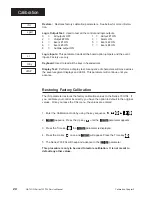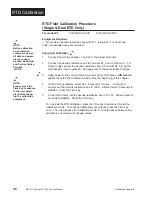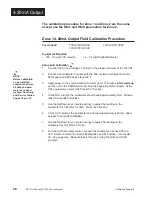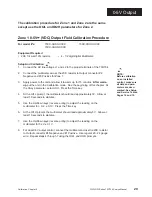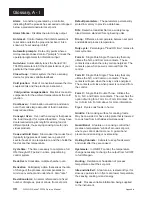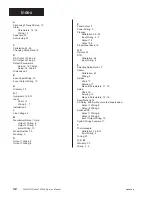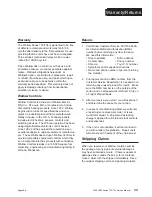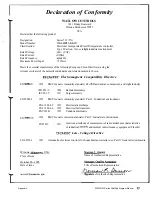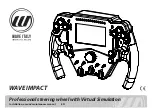
Appendix
30
WATLOW Series 733/734 Service Manual
Glossary, A - I
Alarm: A condition, generated by a controller,
indicating that the process has exceeded or dropped
below a predetermined alarm set point.
Alarm Silence: Disables the alarm relay output.
Anti-reset: Control feature that inhibits automatic
reset action outside the proportional band. Also
known as "reset windup inhibit."
Automatic prompts: Data entry points where a
microprocessor-based control "prompts" or asks the
operator/programmer for information input.
Auto-tune: Automatically tunes the Series 733/
734PID parameters to fit the characteristics of your
particular thermal system.
Closed loop: Control system that has a sensing
device for process variable feedback.
Cold junction: Point of connection between thermo-
couple metals and the electronic instrument.
Cold junction compensation: Electronic means to
compensate for the ambient temperature at the cold
junction.
Combi-oven: Combination convection and steam
oven that cooks large amounts of food in substan-
tially reduced time.
Conveyor Oven: Oven with a conveyor that passes
the food through it for a prescribed time. It may have
doors located along its length for adding food at
different points, thus varying cooking time for indi-
vidual products.
Cook and Hold Oven: Slow cooker that cooks food
(typically large pieces of meat) over a period of
several hours at one temperature, and then holds the
food at another temperature.
Cycle time: The time necessary to complete a full
ON-through-OFF period in a time proportioning
control system.
Deck Oven: Stackable, multiple chamber oven.
Derivative: Anticipatory action that senses the rate
of change of the process, and compensates to
minimize overshoot and undershoot. Also "rate."
Deviation alarm: An alarm referenced at a fixed
number of degrees, plus or minus, from set point.
Default parameters: The parameters permanently
stored in memory to provide a data base.
DIN: Deutsche Industrial Norms, a widely-recog-
nized German standard for engineering units.
Droop: Difference in temperature between set point
and stabilized process temperature.
Duty cycle: Percentage of "load ON time" relative to
total cycle time.
Form A: Single Pole Single Throw relay that only
utilizes the N.O. and Common contacts. These
contacts close when the relay coil is energized. The
contacts open when power is removed from the
control.
Form B: Single Pole Single Throw relay that only
utilizes the N.C. and Common contacts. These
contacts will open when the relay coil is energized.
The contacts will close when power is removed from
the control.
Form C: Single Pole Double Throw. Utilizes the
N.O., N.C. and Common contacts. The user has the
option of wiring for a Form A or Form B contact. Re-
fer to Form A & Form B above for more information.
Fryer: Fryers cook foods in hot oil.
Griddle: Flat cooking surface for cooking foods.
May be one-sided or have a top plate that is lowered
to cook food from both sides simultaneously/
Guard Band: A feature on a cooking control that
creates a temperature "window" around set point,
where you cannot start a menu. A guard band
prevents undercooking or overcooking.
Holding Cabinets: Cabinets to keep foods warm
and moist after they are cooked.
Hysteresis: In ON/OFF control, the temperature
change necessary to change the output from full OFF
to full ON again.
Hunting: Oscillation or fluctuation of process
temperature about the set point.
Idle and Idle Exit: A feature in a restaurant fryer for
slow-use periods to run fryers at a lower temperature,
thus saving cooking oil and energy.
Input: Process variable information being supplied
to the instrument.

